Novel strategy for better nutrient use in piglets
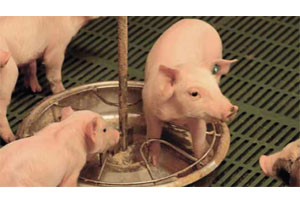
Weaning is a most critical period in the life of a piglet. The change from the sow’s milk to solid feeds often causes a drop in feed intake and intestinal problems. Many companies try to minimise this drop in performance by adding intake enhancers to the starter feeds. A solution may be a coated solution based on phytogenics and flavours.
With the recent and projected increase in the human population and consequent demand for animal products worldwide, the identification of novel strategies to increase the efficiency of food production has become a major research focus. With respect to agricultural animals, optimisation of animal health and nutrient utilisation is a key component of improving production efficiency. Therefore, scientists are focusing on the identification and development of new potential targets of feed additives that can improve animal health and absorption of nutrients. Specifically, there has been new emphasis placed on the gut of the animal and in particular gastrointestinal health, which can influence animal development, health and susceptibility to disease and nutrient metabolism.
Primary challenge: Piglet health
In modern swine facilities, piglets are weaned and exposed to solid feed as early as three to four weeks of age with the objective of increasing the number of litters and consequent production efficiency. Unfortunately, however, early weaning is often associated with significant metabolic stress; one of the most common problems taking place immediately post-weaning is a dramatic drop in feed intake and it can take days for piglets to recover. This not only limits the amount of energy and nutrients that the piglets receive, which has a negative impact on weight gain, but it also depletes the gut of nutrients at a time when its growth and development are critical. Therefore, the challenges associated with weaning piglets are multi-faceted as nutrient intake is decreased, gut development is impaired and subsequent absorption of nutrients is sub-optimal so that the nutrients that are being ingested are not absorbed efficiently. Consequently, there is a lack of nutrients to support the delicate immune system, so weanling piglets are highly susceptible to diseases – particularly diarrhoea – which further impair the absorption of nutrients from the gut. In fact, decreased nutrient absorption and consequent impairment of immunity is the leading cause of mortality in piglets.
Secondary challenge: Piglet growth
When absorption of nutrients and immunity are compromised, growth of the animal also becomes sub-optimal and this has clear economic implications since body weight around the time of weaning is highly correlated with body weight at finishing. Importantly, there does not appear to be growth compensation when animals perform poorly just after weaning. Therefore, many producers focus on strategies to increase feed intake and daily weight gain from day one post-weaning to optimise lifetime performance and economic returns. Although there are several products on the market for use in counteracting post-weaning stress, few of them exploit the normal physiology and development of the gut. In addition, the way in which feed additives are manufactured can have a marked effect on the efficacy of the product when it is used in the field. For many years, feed additives containing flavours, taste enhancers and sweeteners, as well as bioactive plant extracts, have been widely used in piglet feeds to increase feed intake and daily weight gain. Although many of the active ingredients contained in these products have been shown to enhance the flavour of feed and feed intake, it is critical that active ingredients are encapsulated to ensure consistent product performance, to minimise batch-to-batch variation in the amount of active ingredients, and to protect the active ingredients from degradation during manufacturing and storage.
The process of encapsulation shields active ingredients from the constantly changing environment, and it can also be used to control the release of feed additives during specific stages of digestion. Figure 1 illustrates the process of encapsulation by coating, which has been shown to ensure consistent particle size, to protect the loss of active ingredients during processing, and to decrease the variation in the amount of active ingredients across batches.
Production partnership
A feed additive that has recently emerged on the market is called TakTik X-IN, designed to optimise the health and development of the gut. The additive is the first product resulting from a partnership between the Swiss companies Pancosma (ingredient supplier) and Erbo Spraytec (product manufacturer). The two companies jointly launched the first sprouted bed granulation and encapsulation facility in Switzerland. The feed additive is an encapsulated blend of plant extracts and taste enhancers that function not only to increase feed intake, but also to increase the amount of glucose absorbed by the gut. It is designed to address the challenges associated with weaning: Flavour enhancers to increase feed intake, and bioactive sweeteners to increase glucose absorption. Each capsule is coated with a layer of anethole (a phytonutrient found in anise and fennel) and wintergreen oil to provide a fresh burst of flavour and encourages feed intake. The anethole found in this feed additive also has the potential to improve intestinal health since in some experiments it has been shown to decrease inflammation and the formation of free radicals. In poultry the severity of avian coccidiosis was decreased and immunity increased in chickens supplemented with anethole. Experiments are underway to investigate the effect of the additive on intestinal health in piglets. The inner core of each capsule consists of a special formulation of sweet-taste enhancers which act to enhance feed intake and also to increase the absorption of glucose by the gut.
Improved piglet performance
Several animal trials have been conducted to determine the effect of the encapsulated blend of extracts on feed intake and total weight gain during the post-weaning period. The first experiment used 48 weanling piglets (26 days old), and half of the piglets were supplemented with the additive for 16 days post-weaning. The results indicated that the additive increased both feed intake and total body weight gain during the treatment period.
Supplementation also improved the feed conversion ratio by 1.8%, which resulted in a significant predicted increase in economic returns.The mechanism underlying this effect is currently under investigation, but it likely involves multiple factors including a boost in immunity by anethole and an increase in glucose absorption elicited by the sweet inner core of each capsule. Future experiments will define the mechanisms by which this feed additive enhances piglet growth and health, as well as feed intake and growth of other agricultural species. PP
References available on request.
Source: Pig Progress magazine 28.2 (2013)
 Beheer
Beheer

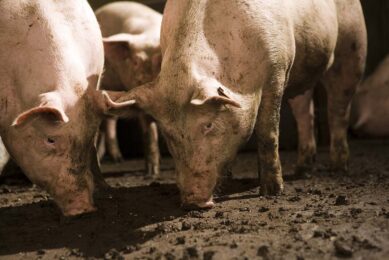
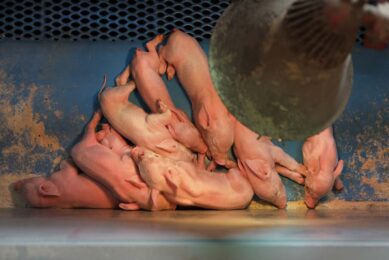
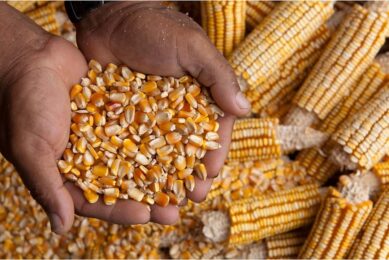
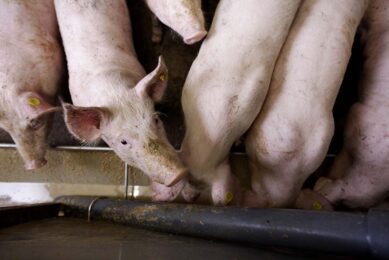



 WP Admin
WP Admin  Bewerk bericht
Bewerk bericht